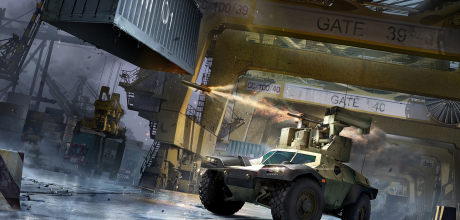
Commanders!
The BM Oplot is the best Main Battle Tank the Ukrainian military industry can currently offer. It is a relatively modern vehicle, but, as it almost always is in the former parts of the Soviet Union, it’s (albeit loosely) based on an old Soviet platform. The BM Oplot is essentially an upgraded version of the T-84 tank, which is itself an upgraded version of a tank called T-80UD Beryoza, which is basically a Soviet T-80U with a Ukrainian 6TD series diesel engine. In other words, the roots of the Oplot go back all the way to the mid-1980s.
Hard to keep track of its lineage? Don’t worry; we’ll start at the beginning.
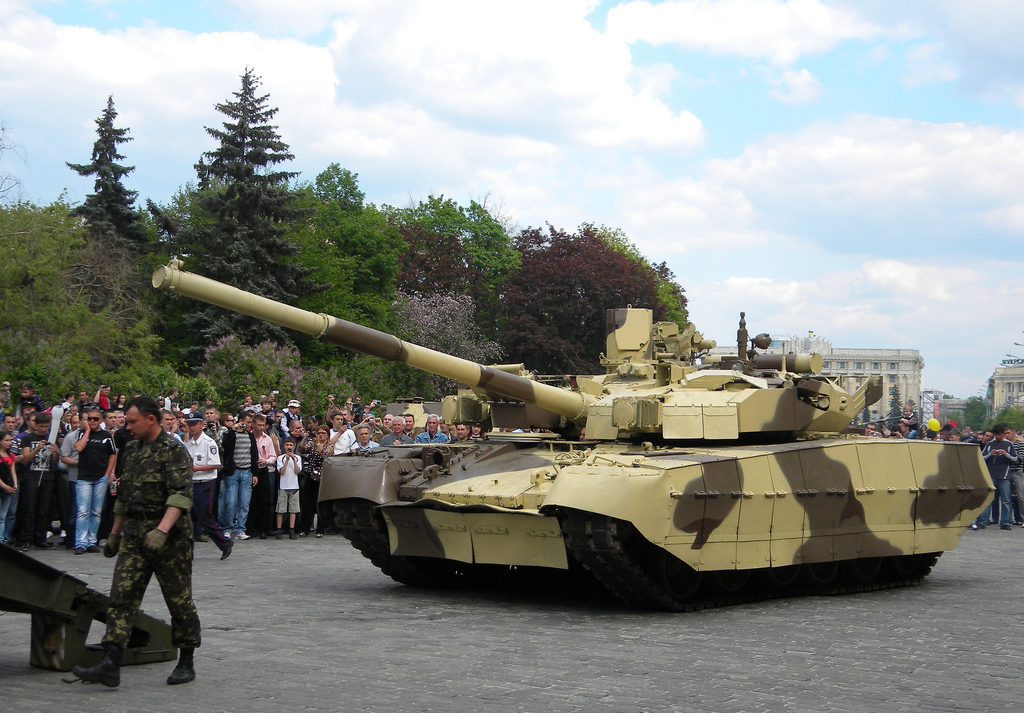
BM Oplot
As we mentioned above, the whole story started with the T-80U. The whole T-80 series has its place in Armored Warfare – specifically on Tiers 5, 6 and 7, and if you are interested in its history and background, please visit our articles dedicated to the specific vehicles:
As we’ve seen on the example of the T-72, one of the things typical for the Soviet tank design was the rivalry of important and influential personalities and, by proxy, different factories, each competing for their slice of the military budget pie that was only getting smaller every year. After all, that is how the Soviet Union ended up with three different Main Battle Tanks of the same generation. It wasn’t really all that different for specific tank components – in our case, the gas turbine engine of the T-80 series had a strong supporter in Field Marshal Dmitry Ustinov, the Soviet Minister of Defense until his death in 1984.
Not everyone was, however, as excited with the prospect of building a large number of turbine-powered tanks as Ustinov was. A turbine engine had quite a few advantages, but also significant drawbacks, one of which was the bane of the military industry of the late Soviet era. As you might have guessed, it was very, very expensive. In the prices of the late 1980s, a V-46 engine (of the type used in a T-72 tank) did cost some 9600 rubles while a GTD-1000 turbine’s price was 104.000 rubles – more than ten times as much. It was also fuel-hungrier, expensive to repair and more maintenance-heavy. In short, it wasn’t what the Soviet military as a whole really wanted.
That was why, even quite early on, experiments were made with fitting a T-80 tank with a diesel engine, especially in the Kharkov plant that was already using the compact and successful diesels in its T-64 series production. A new version of the said diesel, designated 6TD-1 and producing 1000hp, was developed in Kharkov. Originally, this engine was to serve as a component of a considerably improved T-64 prototype along with a new turret (called Object 476) but, when the program failed, it would find its place in a T-80 hull as a part of another experimental program called Object 478.

Object 478
To be fair, both programs overlapped in more than one way. The early Object 478 prototype was basically a T-80 hull mated with an Object 476 turret (carrying a 125mm 2A46M-1 smoothbore gun) and the abovementioned 1000hp engine. An improved version called Object 478M was also envisioned – here, the designers went really crazy with all sorts of fancy and expensive components added to the basic formula, including a new Sistema FCS, a Shatyor hard-kill APS (that never really went anywhere) and a new 1500hp diesel designated 12ChN. But, as it often happened, when attempting to push their ideas, they ran into two major problems – money and Ustinov, who was determined to have Kharkov produce the T-80U in an effort to get as many turbine tanks as possible rolling. And so the Object 478 program was cancelled – at least for a while. Needless to say, overhauling an entire plant to an unfamiliar design took quite some time and resulted ultimately in only approximately four dozen T-80U built and a lot of annoyed Ukrainians.
But, in the end, they got lucky. Ustinov passed away in 1984 and was followed shortly after by another great supporter of the turbine engines, Leningrad’s communist party chief, Romanov. At roughly the same time, an official Soviet study appeared, the conclusion of which was simple – in the next five years, the Soviets would be able to either build 2500 diesel tanks, or 1500 turbine tanks. This kind of math really played into the hands of Kharkov. As a result, the Object 478 program was revived in the form of a T-80U tank that Kharkov was now building, but powered with the 1000hp 6TD engine variant. This tank prototype was referred to as the Object 478B “Beryoza” (Birch). Five early prototypes were built in 1985, they were successfully trialed, shown to M. Gorbachev and, in 1986, it was approved for production under the name of T-80UD.
It’s worth noting that the name itself was a serious source of contention within the Russian military circles. Kharkov originally wanted to have the tank called T-84, following the tradition of other excellent Soviet designs – the T-34, T-44, T-54 and T-64. The opponents of this proposal argued that this was not such a good idea because it would point out the fact that the Soviets were in fact having four different “standard” MBTs in service at the same time (not even talking about the legacy types). In the end, the conflict escalated into the ranks of the Supreme Soviet of the Soviet Union, where it was finally decided to drop the T-80 name and keep the T-80UD designation.
The T-80UD was, at least in combat value, generally similar to the T-80 and was produced from 1986 or 1987 (sources vary) to 1991. Approximately 500 tanks were built until the fall of the Soviet Union, most of which (sources vary between 300 and 350) were located in or near Kharkov when it dissolved. The T-80UD model wasn’t all that famous – it appeared first in public during the 1990 Victory Day military parade and was only noted when a T-80UD in the service of the 4th Kantemirovskaya Guards Brigade shelled the White House in Moscow during the 1993 constitutional crisis. As a service vehicle, it was phased out in Russia in 1995.
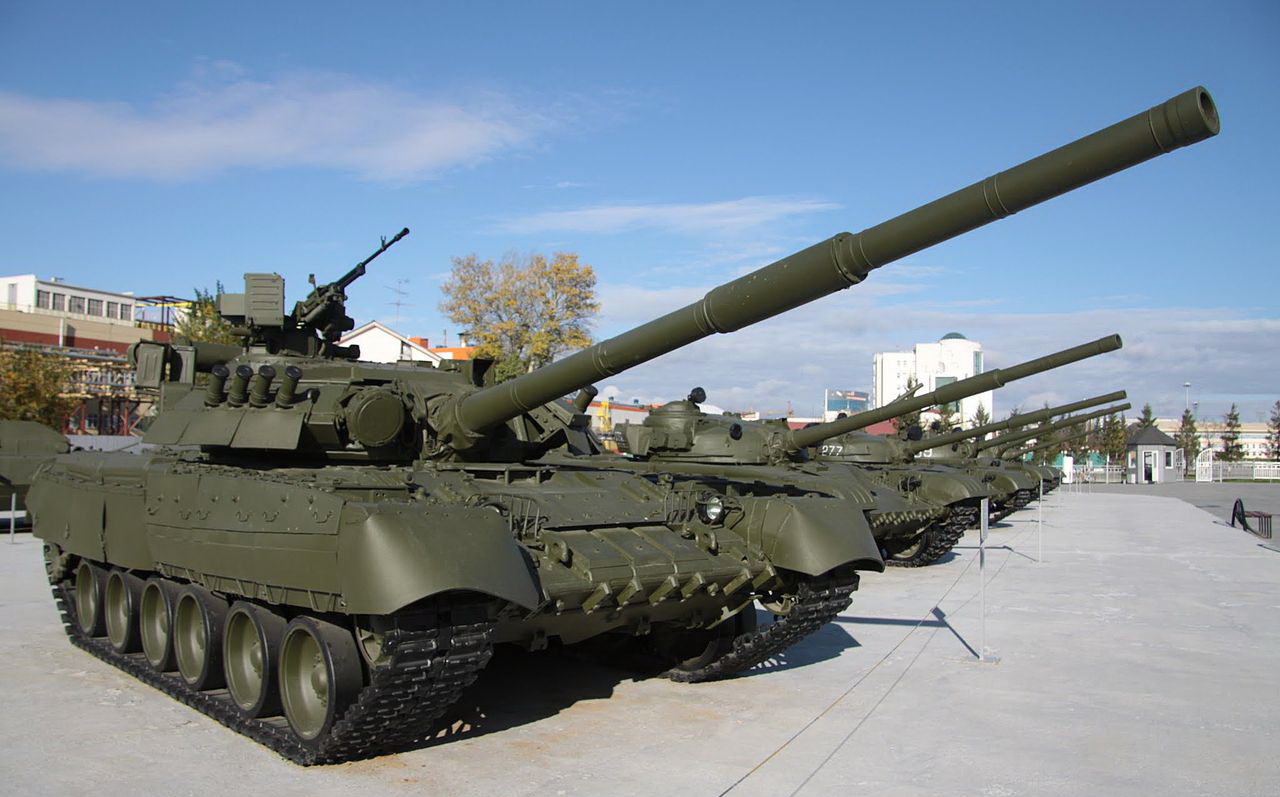
T-80UD
Let us, however, return to Kharkov, since the factory faced its own problems. With the 1991 Soviet dissolution, the military demand and funding collapsed and the Malyshev plant was left to fend for itself. The biggest problem was the sudden shortage of components that were produced outside of Ukraine – for the T-80UD tank, specifically, 70 percent of all its components were produced in Russia and had to be purchased for cold, hard cash – cash which the factory, and Ukraine itself, did not have. With no major Ukrainian military purchases in sight, Kharkov was left with one option only – to build for export. To that end, they started upgrading the T-80UD to make it more attractive.
But first, they had to replace the components that were no longer available. The turret was a particularly important issue as the original company Azovstal from Mariupol, that had been producing them, had gone bankrupt. To replace it, the Kharkov plant designed a new, welded turret. The protection levels of this turret are not generally known, but some experts estimate them to be roughly on par with the standard cast T-80U turret. The primary purpose of its design was not specifically to improve the protection level (although this would be quite desirable), but to replace the missing supply of the older turrets.
Thus upgraded, the T-80UD (Object 478B) became the Object 478BK (K stands for katannaya – welded). This tank, along with several other Kharkov prototypes (a large number of which appeared in the 1990s, all meant for export) were tested in Pakistan successfully, resulting in a veritable infusion of lifeblood into the veins of the Malyshev Plant – a massive order of 320 T-80UDs for the Pakistani army ordered in 1996 and delivered between 1997 and 1999 (some sources claim the tanks arrived as late as 2002).
Of these 320 tanks, 145 had standard cast turrets (52 of which were built during the Soviet era) – this export variant was referred to as Object 478BE. The rest had the new BK turret (this variant was referred to as Object 478BE-1). What is worth noting is the fact that some of these machines apparently came directly from the Ukrainian military stocks – the amount of service T-80UD’s was reduced from 350 to 271 and some of these “phased out” tanks were definitely ended up in Pakistan.
In the meanwhile, the T-80UD evolution continued. The experimental series of Object 478D tanks tested a whole new series of components, including:
- Ukrainian copy of the 2A46M-1 125mm smoothbore gun called KBA-3
- Aynet FCS allowing the tank to fire HE shells with pre-programmed detonation point
- TPN-4 Buran-E night sights
- 1500hp version of the 6TD engine called 6TD-3 (this was rejected due to extra development costs)
- Ukrainian copy of the Shtora soft-kill APS
- Alternative suspensions (Object 478DU1 used a T-80 style suspension while DU2 used a suspension based on the T-64 one)
The best of these components (built on the chassis with a T-80U suspension) were introduced at the IDEX expo in Abu Dhabi in 1995 under a new name – T-84. It’s worth noting that some sources incorrectly claim that it was this tank that was exported to Pakistan – that is not the case, the Pakistani T-80UD’s were using some of the same components (like the new welded turret), but lacked other ones.
Unlike the upgraded T-80UD Kharkov came up with, the T-84 tank itself did not gain any traction, which included the Ukrainian military. That did not deter Kharkov from working on it even further, resulting in a long line of one-off prototypes with various extra components. The most notable of them is the Object 478DU9, also called T-84U Oplot (“Fortress”), from 1999.
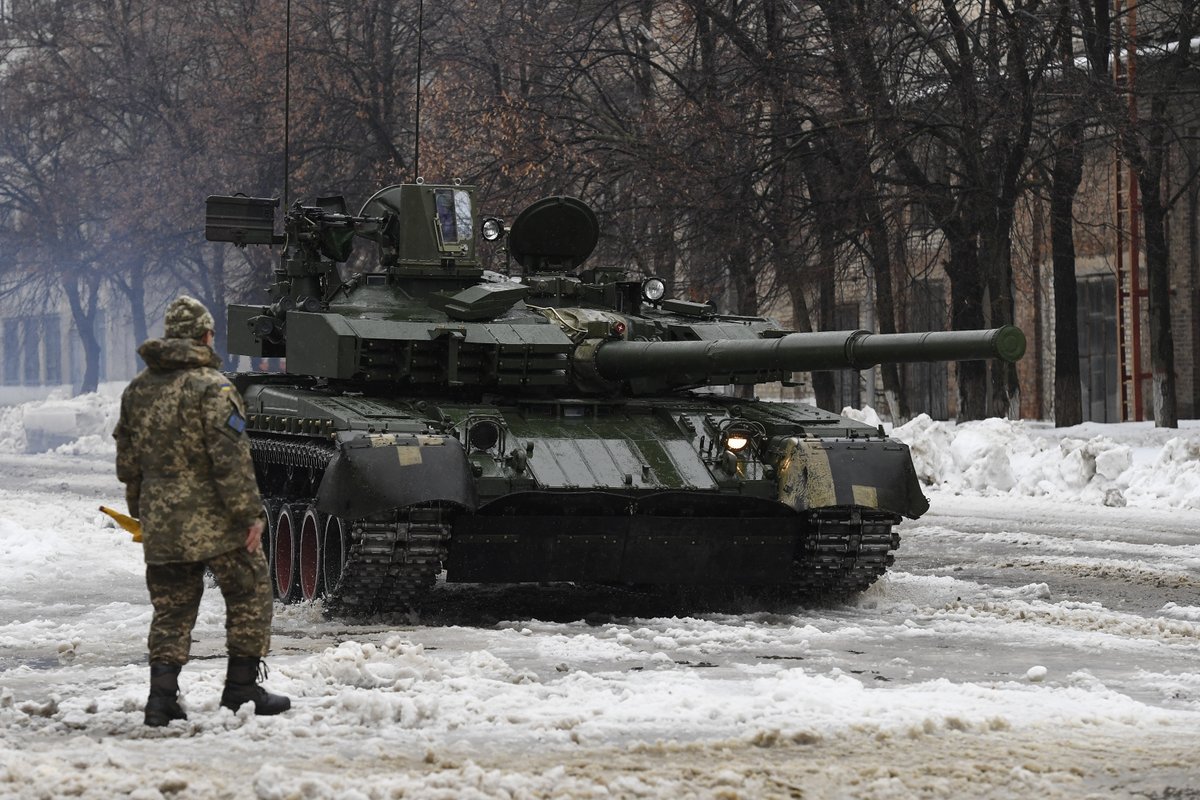
Oplot in Kharkov, 2017
This tank was, as its name suggests, a modernization of the original T-84, which included an improved ERA kit called Nozh (“Knife”), consisting of several layers of explosives that were (allegedly) effective in disrupting and breaking up even kinetic projectiles. Other improvements included:
- New 1200hp 6TD-2 engine with a sturdier mechanical transmission
- Catherine-based thermal imager
- New digital FCS
- Upgraded electronics with GPS
The tank weighed 48 tons, had a crew of 3 men and excellent mobility with the maximum speed of up to 65-75 km/h. It was armed with a 125mm KBA-3 smoothbore gun (copy of the 2A46M-1) with 40 rounds in an improved automatic loading mechanism, located in the turret bustle and separated from the crew compartment by an armored plate, finally correcting one of the most obvious flaws of the T-80 tank.
For its time, the T-84U Oplot was rather solid and it had the potential of becoming the next Ukrainian standard MBT, but, unfortunately for Ukraine, these plans evaporated along with the next wave of post-Soviet military funding cuts. Ukraine ordered 10 of them (delivered between 2002 and 2003), but only was able to pay for six. The tab for the other four was picked up by the Americans, who bought them for their OPFOR units. These six T-84U tanks were in service until 2016 or so, when they were sent to Kharkov for a major repair overhaul. They only returned to service in 2018.
An interesting off-shoot of the T-84U Oplot was the T-84-120 Yatagan, which was essentially the same tank, but with a NATO-standard 120mm KBM2 gun. This tank was offered to Turkey, but didn’t really go anywhere.
Meanwhile, in Kharkov, the Oplot modernization process continued (albeit at a slower rate, caused by a serious lack of funding due to the inability to find customers), resulting in the ultimate version of the machine, the Oplot-M, also known as BM Oplot.
Compared to the T-84U, the BM Oplot has a number of improvements, including:
- Better FCS
- Combined day-night panoramic sights for the commander and a thermal imager
- New welded turret with improved protection levels
- Additional side-protection provided by armored side plates
- Improved ERA kit called Duplet, very effective against tandem warheads
- Varta soft-kill APS, developed from the older Shtora system
- Improved 6TD-2E 1200hp engine with reduced exhaust trail and an automatic transmission
- New communication equipment
The tank weighs three tons more than the original T-84U (51 tons) and can go as fast as 70 km/h. It is still armed with the KBA3 125mm smoothbore, although the abovementioned FCS improvements increase its combat value considerably. The gun can elevate to +15 degrees and depress to -4 degrees. It is, naturally, fully stabilized (2E42M stabilizer) and can fire Kombat semi-active beam rider ATGMs, capable of penetrating roughly 750mm of RHAe after defeating an ERA kit. The optics set consists of:
- 1G46M “Promin” gunner optics with a laser rangefinder
- PTT-2 gunner thermal optics
- PNK-6 commander panoramic sights
The FCS also has a dedicated system that calculates and takes the gun barrel curvature into account.
As for the armor of the tank, according to the producer, the Duplet ERA should protect it against:
- Large guided missiles such as TOW-2 and MILAN
- 125mm HEAT shells
- 120mm and 125mm sub-caliber kinetic shells
Whether that is true or how much of that is realistic has never been proven. The tank is, however, also protected from NBC threats and is equipped with the Varta soft-kill APS and the Zaslon hard-kill APS.
The first Oplot-M took three months to build and was shown for the first time publically in 2009. Ukraine originally ordered ten of these tanks, but this time, the deal was cancelled altogether. The tank was then shown to potential foreign buyers in 2011 at the IDEX expo in Abu Dhabi with a 4.9 million USD price tag per vehicle and this is where the Thai episode began.

Oplot-T
In September 2011, Thailand ordered 49 Oplot tanks to replace its aging M41 Walker Bulldogs in service. These tanks were referred to as Oplot-T and had only small differences compared to the original – they received tropics-grade air conditioning and some smaller internal system modifications.
In January 2013, a Thai general by the name of Prayuth Chan-ocha announced that the first tanks would be delivered until May of the same year with the contract scheduled to be completed until the end of 2015. The first tank for the Thai batch was, however, only built in June and four more until November, when they were officially transferred to Thailand (in Kharkov).
Unfortunately for Thailand, UkrBronProm (the producer) ran into serious delays and no more tanks were built between 2013 and 2015. At the end of 2015, Ukraine asked for a shift in the delivery late until 2016, when the tanks started to trickle in with a few tanks every few months. The contract finally ended in March, 2018 with all 49 tanks delivered. A lot of speculations arose connected to the fact how happy or unhappy Thailand was about the state of the contract. The answer to that question can be gleaned from the fact that Thailand adopted the Chinese VT-4 MBT in 2017 with 28 tanks delivered and 150 more being considered.
This would be the first and, so far, the last BM Oplot export deal. With the Ukrainian military short on cash and the disastrous reputation the company gained from the Thailand deal, the future of BM Oplot looks bleak indeed.
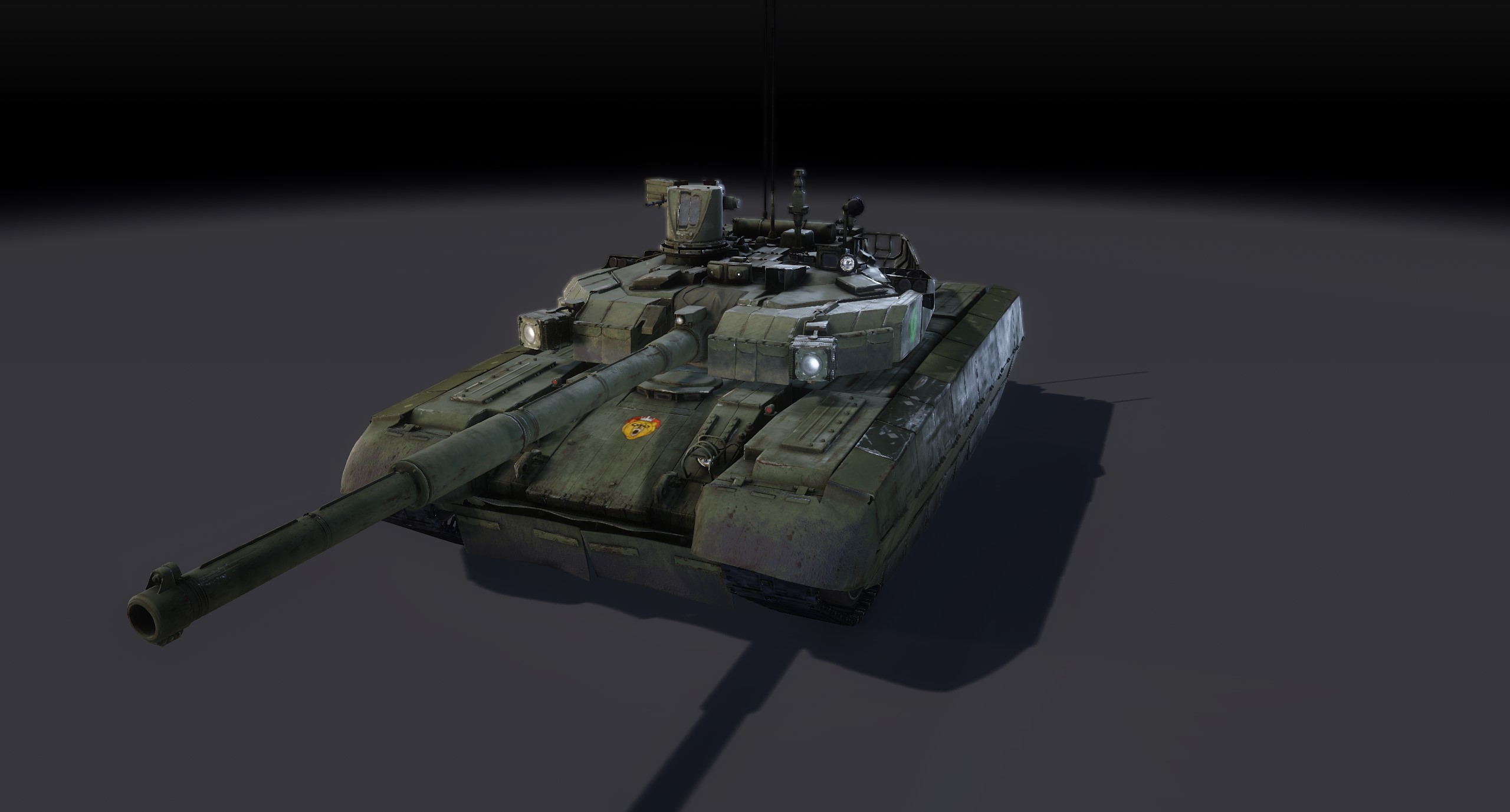
In Armored Warfare, the BM Oplot will be a Tier 9 Premium Main Battle Tank. Performance-wise, it will be comparable to the T-90MS with roughly the same style of play as the T-80U. Compared to the T-90MS, it will feature a bit better armor and mobility, balanced by inferior shells and gun performance with the exception of the damage per minute value and accuracy, which will be slightly better.
While its basic protection is not the best in the game, what will make it unique is its highly resistant Duplet multi-layer ERA that can withstand more than one hit before breaking. Defeating it will require multiple shots fired at the same position. Areas covered by the Duplet ERA will therefore be extremely resistant to damage until the ERA itself is defeated.
We hope that you will enjoy it and will see you on the battlefield!




